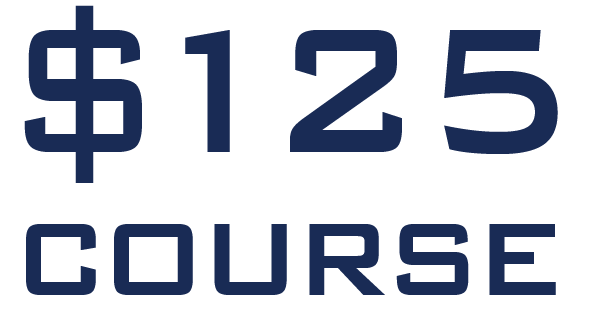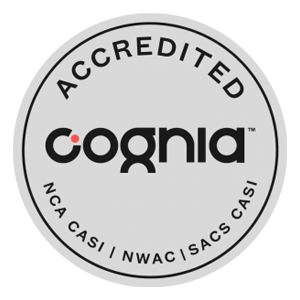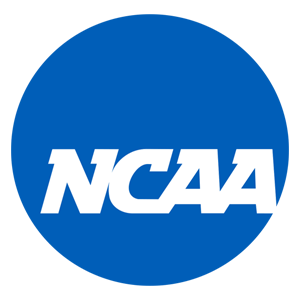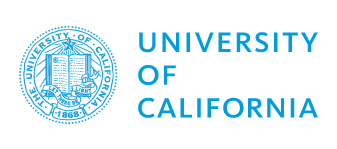
US Legal Framework for High School Education
This page is intended to explain how the legal and regulatory framework works for high schools in the United States. It is not intended as legal advice. For legal advice, consult a licensed attorney.
State-by-State
Education in the United States is primarily governed at the state and local levels, with states and communities responsible for establishing schools, standards, curriculum, and graduation requirements. This decentralized approach comes from the Tenth Amendment of the U.S. Constitution, which reserves powers not delegated to the federal government to the states and the people. States have an inherent power called “police power” to regulate behavior and enact laws for health, safety and welfare. Education falls under this umbrella. Under the U.S. Constitution, states retain powers to govern, except for the enumerated list of powers given to the federal government. Education is not on that enumerated list, so it is down to each state to determine how education is governed. Some states are very hands-on, others are hands-off and all states operate differently.
Thus, state legislatures create laws pertaining to public education policy and oversight within their borders. State boards and departments of education are then tasked with interpreting, administering, and enforcing education statutes and regulations at the state level. Individual school districts report to these state education agencies while retaining local control over day-to-day operations and instruction.
Federal Involvement
While not mentioned in the Constitution, the federal government has gradually assumed more responsibility around ensuring access, quality, and outcomes in education – especially for vulnerable student groups. Essentially, the federal government uses its funding as a lever to influence state policies in education. Laws like the Elementary and Secondary Education Act of 1965 and the Individuals with Disabilities in Education Act guide use of federal dollars towards meeting needs of disadvantaged youth. This aims to protect civil rights and provide funding where local resources fall short.
The federal Department of Education administers grants, collects nationwide data, and enforces regulations around use of federal funding plus civil rights laws tied to schools. But the federal government cannot control or directly manage public education systems. State participation in federal initiatives is voluntary (though funds are attached as incentive).
Multi-State Collaboration
Sometimes groups of states choose to synchronize aspects of their education systems for consistency, efficiency and increased quality. A well-known example was adoption of the Common Core academic standards by 42 states starting in 2010. Common Core provided shared benchmarks for English and Math based on research and best practices. While controversial and not federally mandated, collaboration made classroom resources more transportable across state lines and enabled rich data comparisons – ultimately seeking to raise outcomes overall. Similar multi-state coordination happens frequently with academic and vocational training initiatives as well.
States hold the bulk of responsibility for education based on the Constitution, focusing both legislation and implementation through state education departments. The federal role has evolved to support equal access and high standards. And states often partner for maximized impact of programs and policies. Together this structure aims to promote excellence tailored locally across America’s schools.
Schools & School Districts
While states set overall compulsory education laws, curriculum standards, testing regimes, and teacher certification requirements, there is substantial flexibility at the local district and school level to customize policies and procedures.
School districts have governing boards, often elected locally, that make important decisions about funding allocations, staffing, facilities, technology infrastructure, transportation, and other operational aspects. District boards approve budgets and establish policies reflecting community priorities and interests. For example, one district may offer extensive vocational-technical training options while another focuses more on visual and performing arts.
Likewise, school principals, in conjunction with elected site councils made up of parents and staff, have authority over school initiatives tailored to the student populations they serve. Examples include policies regarding attendance, student discipline, grading, athletic programs, health services, public performances, field trips, and parent engagement. However, these cannot contradict legal obligations imposed at higher government levels.
Through this multi-tiered governance structure, states try to balance education quality and access with local flexibility for customization. Regional educators closest to primary stakeholders – students, parents, employers – can develop creative grassroots solutions meeting needs in that community while adhering to democratically-enacted laws assuring baseline standards and opportunities statewide. However, reliance on property taxes for funding does lead to ongoing challenges equitably serving districts of varied socioeconomic demographics. Overall the goal is to promote vibrance and self-determination coupled with conscientious state oversight guarding against discrimination.
Compulsory Education & Truancy
Attending school regularly is an important part of success as a student. That’s why every state has established compulsory education laws that require school attendance for youth under 18 years old. Let’s take a closer look at what these truancy laws entail across the United States.
The Purpose of Compulsory Education
All states require school-aged youth, generally between 5-18 years old depending on the state, to attend either public school or an equivalent accredited program like private school or homeschooling. The goal is to ensure young people receive an adequate education that prepares them for informed citizenship and employment later in life. This recognizes education as an essential right of childhood.
Required Hours and Days of Attendance
Students are expected to follow the full schedule set by their enrolled school or district, attending each day of the established school calendar. A standard academic year includes 175-185 instructional days spanning 9-10 months. A full-time high school schedule is generally around 30 hours per week.
Most states have an exception allowing youth aged 16 or older to work part-time and attend school on an abbreviated schedule, provided they are making progress towards graduation.
Defining and Addressing Truancy
Truancy refers to unexcused absences from the required days and hours of school. States typically classify truancy as a specific threshold – ranging from 3 days over a 3 month period in some states to over 10 days per school year in others. Extending beyond this threshold can trigger various intervention measures and disciplinary consequences.
When truant, the school will first notify and involve parents. Together custodians and school staff implement tailored supports like counseling, parent conferences, attendance contracts, or outside referrals to relevant services that can mitigate barriers to attendance. The priority is providing these targeted resources at the initial signs of chronic absence rather than delaying until students miss weeks of critical learning.
Consequences for Ongoing Truancy
If attentiveness and cooperation is not shown and absences become habitual past the defined truancy threshold, schools can make formal referrals to juvenile court and community truancy boards. At this phase, penalties can include fines issued to parents, required community service, loss of driving privileges, or even juvenile detention in some cases. The specific response escalation varies across districts and judges.
In recent years, there has been a shift away from harsh punitive reactions towards preventative measures instead. The goal is to avoid criminalizing youth in response to truancy when often environmental factors outside their full control are at play. Still, accountability paired with support is considered the best practice model.
Application to Alternative Schooling Formats
Compulsory education and truancy laws still apply even when students attend school through non-traditional formats. This includes charter schools, online virtual schools, and homeschooled students. The key requirement is that the program meets curriculum, reporting, and assessment regulations in the state, often having to file documentation of attendance plus subject mastery evidence. This shows adequate educational progress is occurring comparable to public schools.
Similarly, truancy procedures for these formats first seek to address underlying causes with counsel rather than immediately issuing sanctions based on attendance data alone. The priority is on confirming genuine engagement is happening and suppling resources to get struggling students fully reconnected.
Dual Enrollment and Earning Outside Credits
One flexibility offered in most states is that students can remain enrolled at their primary public or private school while also taking individual courses at outside institutions like community colleges or virtual schools. As long as the supplemental courses are pre-approved and transcripts are shared, the credits can transfer back to count towards graduation progress at their main registered school. This “dual enrollment” approach allows customization and accelerated pacing in specific subjects when appropriate while the student still satisfies compulsory education through their core school. For instance, a student struggling at math may take an approved online algebra class. Counselors help guide optimal course planning.
Adult Students Exempt
Unlike minors, adults are not subject to the compulsory education regulations. Where a minor would be required to certain required hours and days of attendance, as prescribed by state law, adults are under no such obligation. Adults are free to take as much time as they like, or they need to complete a course of study.
High School Graduation Requirements
States define coursework and assessment criteria that public high school students must complete in order to earn a diploma. While holding to minimum course offerings and proficiency levels per federal regulations, states exercise autonomy adapting expectations to local economic needs and cultural values.
Most states use Carnegie units as the metric underlying high school graduation plans – specifying both overall total Carnegie credits plus minimum amounts in key subject areas like math, science, literature and composition. One Carnegie credit represents completion of a 120 hour course over a year. Standard U.S. graduation requirements are around 20-26 Carnegie credits accumulated over 4 years of enrollment.
However, a few states like California and Wisconsin have alternative credit systems not directly based on Carnegie units and hours. In these cases graduation plans are structured around demonstrating competencies across required skill domains like analytical reading, quantitative reasoning and civic awareness. Plans may list numbers of credits but focus more holistically on work products showing adequate preparation for careers or college.
Whether following formal Carnegie recipes or emphasizing Masters-based performance assessments, the ultimate goal of any state-defined graduation requirements is to ensure students are challenged to build a well-rounded foundation of transferable knowledge, literacies, and capacities before concluding their secondary public education journey. With customization, states adapt this vision based on economic opportunities and civic needs across their distinct communities. Though unity of purpose prevails – using thoughtful requirements to equip youth for personal success amid their states’ prevailing social contexts.
Typical Graduation Requirements
While specific credit and course mandates differ, most states structure high school graduation requirements around earning credits in core subjects each year. Students typically take a sequence of English/language arts, math, science, and social studies courses throughout their 4 years of high school. More specialized subjects like foreign languages, physical education, health, and arts are also usually required but in fewer credits.
For example, a common breakdown would be:
- 4 credits (years) of English Language Arts – Combination of literature, composition, speech, etc.
- 3 credits of Math – Spanning Algebra, Geometry, Trigonometry, Calculus, etc.
- 3 credits of Science – Covering concepts in Biology, Chemistry, Physics, etc.
- 3 credits of Social Studies – With required U.S. History, Geography, Government
- 1 credit of Arts Education
- 2 credits of the same Foreign Language
- 2 credits of Physical Education
- 0.5 credits of Health Education
In addition, many states require between 6-10 elective credits for miscellaneous courses fitting student interests like finance, psychology, marketing, computer programming, agriculture, journalism, engineering, family studies, and more.
Students must pass required courses each semester and cumulatively gather credits matching their enrollment years alongside any assessment benchmarks (exit exams, citizenship tests, etc). Counselors help students select appropriate courses each term leading to an eligible transcript for graduation.
The goal of typical requirements covering essential knowledge areas, enriched by electives, is for public schools to graduate well-rounded critical thinkers ready to excel in higher education, careers, and civic life after secondary school.
Accreditation
Accreditation is a voluntary external quality review process for schools seeking to demonstrate excellence against established criteria. Non-governmental regional or national accrediting commissions conduct extensive evaluations across factors like financial operations, health/safety, leadership, staff credentials, community engagement, facilities, academic rigor and more.
Major accrediting bodies include Cognia (formerly AdvancED) serving over 34,000 US schools. Standards align with research on conditions enabling impactful learning along with ethical operational norms. The goal of accreditation is continuous improvement guided by comprehensive critical feedback rather than just a quality label.
Earning and Maintaining Accreditation
The accreditation process begins with an in-depth internal self-study by a school ahead of application submission. If documentation shows potential alignment to standards, the school hosts a site visit where accrediting personnel thoroughly interview stakeholders and review practices over multiple days. A decision-making commission then determines eligibility for 1-7 year accredited status including any required follow-up actions.
Maintaining accreditation involves regular detailed progress reports evidencing engagement with prior feedback and updating evolutions in school programs and outcomes. Schools participate in training to implement improvements. Revocation of accreditation occurs in rare cases of egregious or unaddressed non-compliance over multiple review cycles.
Accreditation History and Relevance
The accreditation movement took hold in K-12 education over 50 years ago to cultivate cultures of ongoing enrichment beyond just student test results. It grew from prior higher education models emphasizing holistic scrutiny. Today over half of US primary and secondary schools complete voluntary accreditation signifying dedication to comprehensive excellence.
Not to be confused with basic state licensing, accreditation boosts school reputation, gives colleges confidence in course transfer credits, and eases student athlete NCAA eligibility. Some states support the process via policies about transparency, funding for associated fees, or accountability aligning with standards. Ultimately millions of families, community members and school employees benefit from the extensive critical insights cooked into the accreditation cycle.
School of Record
The school of record refers to the school that assumes official responsibility for enrolling a student, issuing grades, conferring credits, generating transcripts, recording promotion/retention, and ultimately granting graduation credentials. There may be more than one school of record depending on how student participation and courses are divided:
- For full-time students at traditional public or private campuses, that school serves as the main school of record.
- Yet with part-time and supplemental enrollment options gaining popularity like online platforms, the external program can act as school of record for the credits under their portfolio while coordinating transfer back to the student’s primary school district to incorporate into graduation progress.
- If a student attends an accredited full-time online school without campus affiliation, the virtual school operates as their diploma-granting school of record accountable for the whole academic lifecycle.
The school of record is the school(s) accountable for formally enrolling students in courses leading to promotion between grades and ultimately conferring high school graduation recognition upon mastery of complete credential requirements. This formal authority over the cumulative trajectory can be held by online platforms, home schools, or traditional brick-and-mortar campuses collaborating towards unified advancement.
Transcripts
A transcript is an official academic record showing all coursework and grades that a student has taken throughout their educational career. Here are some key details on the role of high school transcripts:
- High school transcripts list out every course, final grade earned, number of credits either per course or per semester, school years attended, GPA for each year and cumulative GPA.
- They are generated by the designated school of record that has direct enrollment documentation for the student during each of the listed terms.
- High school transcripts may also show class rank percentile indicating performance relative to peers. Honors, awards, or special recognitions can also appear.
- The purpose of transcripts is to provide a verified standardized summary of students’ complete academic histories including both course milestones and summative performance indicators like grades. This allows evaluation of aptitudes, work ethic, knowledge foundations and skills developed.
- Colleges, technical schools, scholarship committees and employers frequently request transcripts as part of application processes to assess prior mastery and future promise based holistically on total secondary school engagement across disciplines.
In essence, transcripts aim to quantify acquisition of secondary education using detailed listings of classes paired with proficiency conversions to standardized measurements like GPAs and class ranks. This impacts higher education access, scholarship eligibility and career paths. Maintaining integrity by school of record is crucial.
School Funding
Public schools in the U.S. receive funding from a combination of local, state, and federal tax revenue sources. However, the lion’s share of funding comes from state governments.
On average, state funds account for approximately 46% of total expenditures towards public elementary and secondary school funding. Most state funding is distributed on a per-pupil basis tied to enrollment, with additional special allocation for transportation, lunch programs, and students with disabilities requiring more services. States may also maintain grant programs incentivizing locally-designed improvements.
Local sources like property and sales taxes contributed an estimated 45% on average. However, this leads to large inequities between property-wealthy and property-poor districts. To compensate, many states have “equalized funding formulas” adding money to poorer districts up to minimum per-student levels.
The federal government contributes a supplemental 7-10% of K-12 education funding nationwide. These funds are predominantly dedicated to assistance programs for low-income students, special education, English language learners and similar targeted interventions. Compliance requirements accompany the money.
Charter schools were conceived to have greater autonomy free from district controls. Originally charter funding replicated the mix above. But evolutions enabled direct allocation from states to charters, drawing over 80% of revenue from state coffers in many cases while still funded on per-pupil calculations.
State governments foot the largest portion of public education bills by design, while the federal role remains narrowly supplemental based on student needs. Charter models continue working out optimal governance and equitable resourcing still relying primarily on public money.
Charter Schools
Charter schools emerged as an education innovation concept in the early 1990s, envisioned as a way to promote flexibility and innovation within public education. They are tuition-free public schools independently operated under performance contracts, known as charters, which detail outcomes and accountability standards they must meet.
Minnesota passed the first charter school law in 1991. The approach was then promoted in the Charter School Expansion Act of 1998 as a state-level reform to improve outcomes for at-risk students struggling in traditional schools. This federal legislation provided grant funding helping states pass laws authorizing charters and providing startup planning resources.
As of 2022, 44 states plus Washington D.C. have laws permitting charter schools. Typically charter laws give extended operational autonomy to approved schools in exchange for enhanced accountability tied to the charters’ stated targets around student achievement, financial practices, and other criteria. Charters have freedom over staffing, scheduling, textbooks, and instructional models. This flexibility aims to allow experimentation identifying promising practices that districts can replicate more widely.
States with charter laws establish application/review processes where organizers outline their school model and goals. Authorized charters are overseen by the state board of education or independent chartering entities rather than local districts. Schools may have revocation processes for those continually failing to meet charter obligations. Funding models vary but are often a mix of state and district dollars tied to enrollment.
So charter legislation originated in the 90’s as a school choice vehicle for publicly-funded but independently-run schools – reducing bureaucracy to spur advances through focused charters. The model has steadily expanded across most states over 30 years with mixed results but retaining concepts of high accountability and innovation sharing.
Private Schools
Private schools are independently managed schools that charge tuition, do not receive public funding, and have more autonomy over decisions than public options. Key distinctions include:
- Private schools are privately funded through tuition payments, donations and private grants. They do not receive any direct public tax dollars.
- They have more independence regarding teacher hiring/firing, student discipline policies, and curriculum choices since they are not overseen by public entities.
- However, private schools still need to meet basic state standards and safety regulations. And many pursue rigorous nationally-recognized accreditation to signal quality.
- Access to private schools is dependent on families’ ability to pay tuition without assistance. Many provide financial aid, but total enrollment capacity remains limited.
In contrast, public schools are funded by a mix of local, state and federal tax dollars so access is universal. Public charter schools also use public money so remain tuition-free, but have more flexibility like private schools since they are independently operated under charters.
Private schools distinguish themselves by retaining leadership autonomy through private funding streams while public schools commit to serve all students in return for public funds and oversight. Charters blend some aspects of both.
Homeschooling
Homeschooling was illegal across the United States prior to reforms in the 1970-1990s decriminalizing the practice state-by-state. Homeschool legalization enabled parents to directly manage their child’s education at home as an exemption to compulsory attendance at institutional private or public schools.
Once legalized, homeschool regulations were minimal in most states, allowing considerable autonomy over curriculum choices, instructional hours, teacher qualifications of the parent overseer, and assessment reporting. States eventually incorporated some oversight such as periodic testing and portfolio reviews to ensure adequate progress in core subjects comparable to public schools. Homeschooled students can pursue equivalency certificates or diplomas.
More options emerged for parents seeking additional support while still educating kids from home including enrollment with hybrid public school programs. Over 30 states now have full-time online public schools blending remote coursework with in-home project collaboration. These operate tuition-free under the charter school model. States issue per pupil funding to the schools based on homeschool enrollment, accessed completely virtually or via periodic in-person activities.
Some districts also began offering part-time customizable homeschool programs where parents carry the bulk of instruction supplemented with elective or advanced courses at school sites. These à la carte options access district textbooks, technology, special education services and more for home students without full enrollment.
Homeschool laws have increased access and flexibility dramatically over recent decades, shielded from much regulation through autonomous options. Publicly-funded charter school extensions and course partnerships now aid those desiring additional content, socialization or accountability guardrails beyond their own home capabilities.
Homeschooling v. Schooling from Home
There are many students taking SVHS courses who are enrolled in an accredited state, private or online school. These students are schooling from home, but they’re not what we are referring to when we talk about “Homeschooling”.
Homeschooling is a form of education where parents or tutors educate children at home instead of sending them to a public or private school. Some key aspects of homeschooling include:
- Curriculum and instruction is primarily directed by the parents, not an external school. Parents have control over what subjects are taught, the teaching methods and schedule, etc.
- There is no formal affiliation with a school system or external educational institution. Homeschooled students are not enrolled in a school, though parents may choose to use some school resources.
- Homeschooling requirements and regulations vary by state. Some states impose standards, testing, or supervision requirements, while others have few or no rules for homeschoolers.
This differs from schooling from home, where students are still considered enrolled in an accredited public or private school. With schooling from home:
- Students are registered with the affiliated school and follow the school’s educational standards and curriculum, even if instruction takes place at home.
- Teachers or education representatives appointed by the school oversee education and possibly conduct assessments. The school is accountable for the quality of the education.
- Students receive an accredited diploma through the school they are enrolled in, not their parents. Schooling from home also adheres to standard school enrollment, attendance tracking, and testing policies in applicable states.
Homeschooling is directed independently by parents, while schooling from home maintains connections to and oversight by an accredited school system. Homeschooling functions outside of formal school systems.
Variation in Credit Systems Across US States
In the United States, the education system is decentralized, with each state having its own set of regulations and guidelines governing education. One area where this decentralization is particularly evident is in the determination of academic credits for courses. While some states adhere to the Carnegie unit system for assigning credits, others have adopted alternative approaches.
The Carnegie unit system, named after the Carnegie Foundation for the Advancement of Teaching, traditionally assigns one credit hour for a course that meets for one hour per week over the duration of a semester, typically totaling 15 weeks. Consequently, a standard semester-long course under the Carnegie system is usually awarded 1 credit. However, this system is not universally adopted across all states.
In contrast, some states opt for a more granular approach to credit assignment. In these states, the credit value of a course may vary depending on factors such as instructional hours, content depth, and academic rigor. As a result, a single semester course in these states might be worth more or fewer credits than its equivalent in a Carnegie-based system. For instance, a semester-long course in a state using the Carnegie unit system might be awarded 1 credit, while the same course in a state with a different credit system could be worth 0.5 credits or 5 credits, depending on the specific regulations in place.
Consistent with states like California, Silicon Valley High School applies 5 credits for a single semester course. This translates to 75 hours of study. In some states, this would translate to 0.5 credits.
States Using Carnegie Credits:
- Alabama
- Alaska
- Arkansas
- California
- Colorado
- Connecticut
- Delaware
- District of Columbia
- Florida
- Georgia
- Hawaii
- Idaho
- Illinois
- Indiana
- Iowa
- Kansas
- Kentucky
- Louisiana
- Maine
- Maryland
- Massachusetts
- Michigan
- Minnesota
- Mississippi
- Missouri
- Montana
- Nebraska
- Nevada
- New Hampshire
- New Jersey
- New Mexico
- New York
- North Carolina
- North Dakota
- Ohio
- Oklahoma
- Oregon
- Pennsylvania
- Rhode Island
- South Carolina
- South Dakota
- Tennessee
- Texas
- Utah
- Vermont
- Virginia
- Washington
- West Virginia
- Wisconsin
- Wyoming
States Using Alternative Credit Systems:
- Arizona
- Massachusetts
- Michigan
- Oregon
- Vermont
It’s important for educators, students, and policymakers alike to be aware of these differences in credit systems when considering educational standards and transferring credits between states. While the Carnegie unit system remains prevalent in many states, the adoption of alternative credit systems reflects ongoing efforts to tailor education policies to the specific needs and objectives of individual states.
Note: that the inclusion of Massachusetts and Michigan in both lists is intentional, as these states have districts or schools within them that may use alternative credit systems alongside the more common Carnegie system. Additionally, further research may be needed to confirm the credit systems in place in each state, as education policies can evolve over time.
90,545 Enrolled Students































